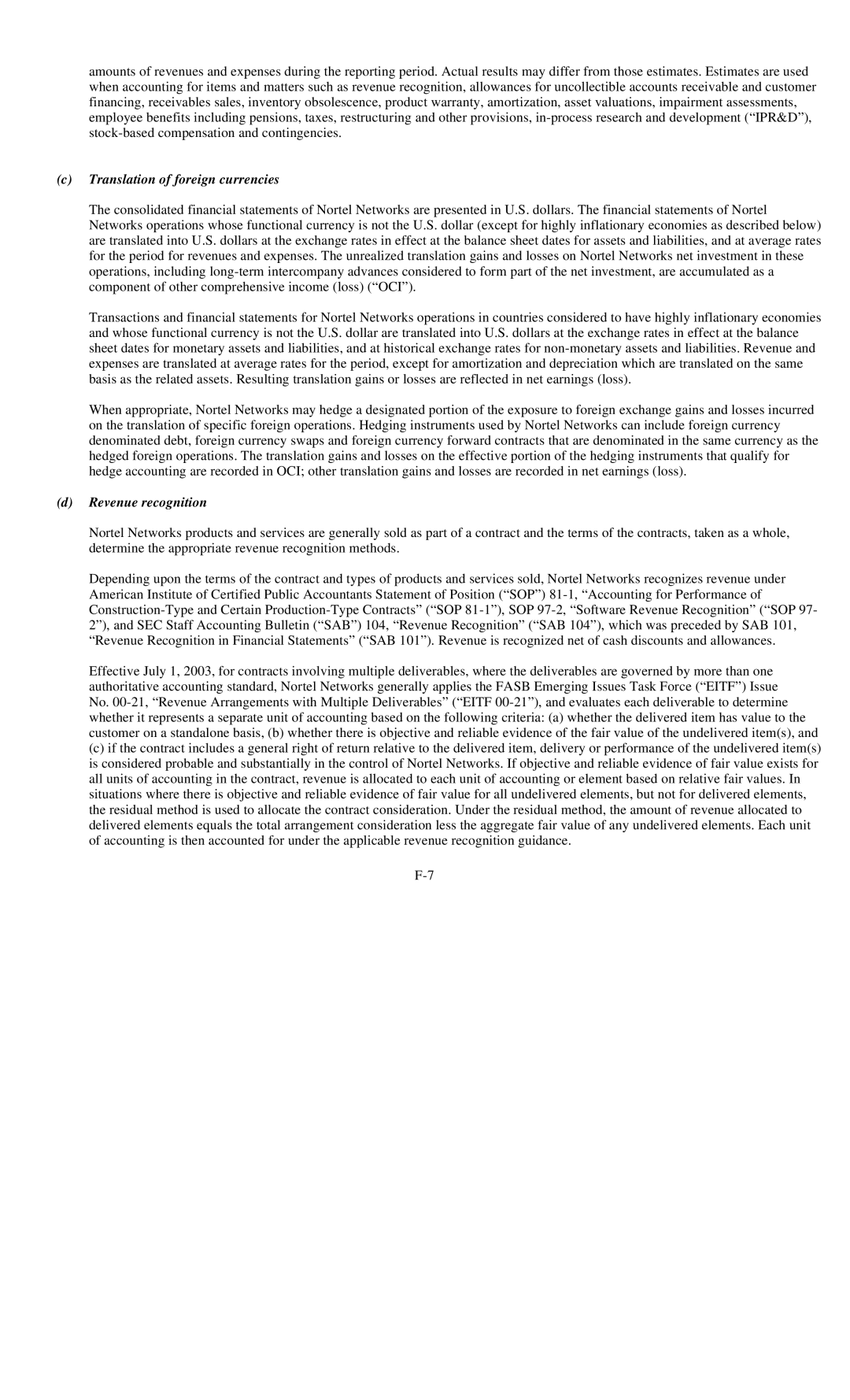amounts of revenues and expenses during the reporting period. Actual results may differ from those estimates. Estimates are used when accounting for items and matters such as revenue recognition, allowances for uncollectible accounts receivable and customer financing, receivables sales, inventory obsolescence, product warranty, amortization, asset valuations, impairment assessments, employee benefits including pensions, taxes, restructuring and other provisions,
(c)Translation of foreign currencies
The consolidated financial statements of Nortel Networks are presented in U.S. dollars. The financial statements of Nortel Networks operations whose functional currency is not the U.S. dollar (except for highly inflationary economies as described below) are translated into U.S. dollars at the exchange rates in effect at the balance sheet dates for assets and liabilities, and at average rates for the period for revenues and expenses. The unrealized translation gains and losses on Nortel Networks net investment in these operations, including
Transactions and financial statements for Nortel Networks operations in countries considered to have highly inflationary economies and whose functional currency is not the U.S. dollar are translated into U.S. dollars at the exchange rates in effect at the balance sheet dates for monetary assets and liabilities, and at historical exchange rates for
When appropriate, Nortel Networks may hedge a designated portion of the exposure to foreign exchange gains and losses incurred on the translation of specific foreign operations. Hedging instruments used by Nortel Networks can include foreign currency denominated debt, foreign currency swaps and foreign currency forward contracts that are denominated in the same currency as the hedged foreign operations. The translation gains and losses on the effective portion of the hedging instruments that qualify for hedge accounting are recorded in OCI; other translation gains and losses are recorded in net earnings (loss).
(d)Revenue recognition
Nortel Networks products and services are generally sold as part of a contract and the terms of the contracts, taken as a whole, determine the appropriate revenue recognition methods.
Depending upon the terms of the contract and types of products and services sold, Nortel Networks recognizes revenue under American Institute of Certified Public Accountants Statement of Position (“SOP”)
Effective July 1, 2003, for contracts involving multiple deliverables, where the deliverables are governed by more than one authoritative accounting standard, Nortel Networks generally applies the FASB Emerging Issues Task Force (“EITF”) Issue No.
(c)if the contract includes a general right of return relative to the delivered item, delivery or performance of the undelivered item(s) is considered probable and substantially in the control of Nortel Networks. If objective and reliable evidence of fair value exists for all units of accounting in the contract, revenue is allocated to each unit of accounting or element based on relative fair values. In situations where there is objective and reliable evidence of fair value for all undelivered elements, but not for delivered elements, the residual method is used to allocate the contract consideration. Under the residual method, the amount of revenue allocated to delivered elements equals the total arrangement consideration less the aggregate fair value of any undelivered elements. Each unit of accounting is then accounted for under the applicable revenue recognition guidance.
